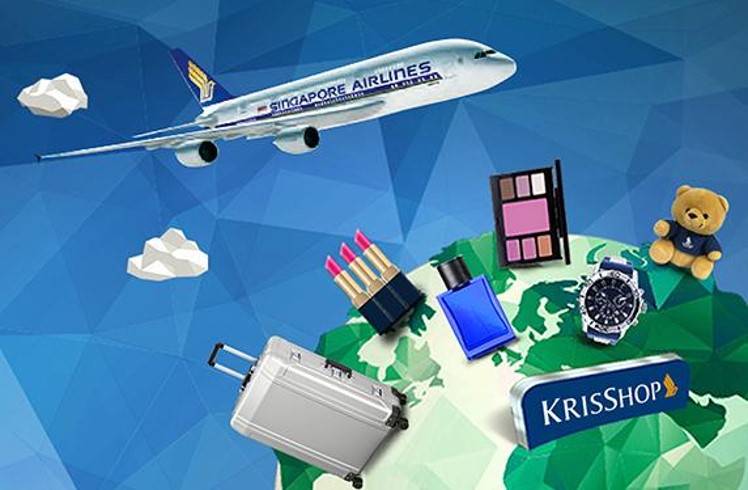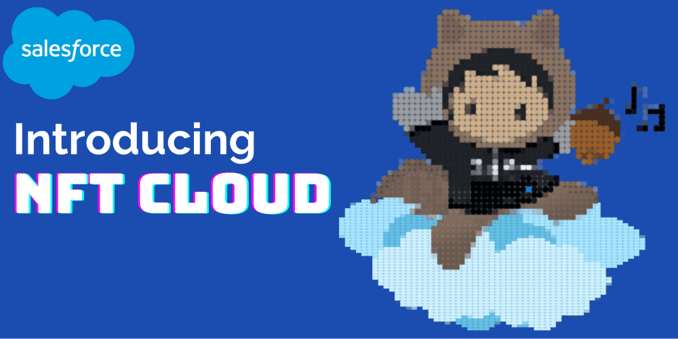The Rise of Blockchain Reward Programs
Lessons learned from our recent webinar. The post The Rise of Blockchain Reward Programs appeared first on Bitcoin Market Journal.


Summary: I talk about the mental game of investing, particularly as it applies to crypto markets. Subscribe here and follow me to get weekly updates.
Starbucks. Singapore Airlines. Burger King. Clinique. Salesforce.
What do all these companies have in common?
They have all launched reward programs built on blockchain.
You have no idea how many companies have jumped into the world of blockchain. I had no idea, either, until I was preparing our latest webinar (full replay available for Premium members.)
A huge shout-out to my co-presenter Heather Lowe, Senior Attorney at Gravis Law, who taught me a lot about these reward programs and how they’re being used by top companies. Read on.
Reward Programs = Loyalty Programs
You know reward programs, because you probably belong to a dozen of them. Amazon Prime. Frequent flyer programs. My local pet shop has a punch card where we buy 10 bags of dog food and get the 11th one free.
Reward programs are also called loyalty programs, because the idea is to build customer loyalty. Give frequent shoppers a benefit, and they’ll shop even more frequently.
Today, loyalty programs are increasingly digital. (Burn the punch cards.) To see how Starbucks Rewards has become a digital growth engine for the company, watch this video. It’s worth your time.
How Starbucks Rewards is upgrading to blockchain.
This video has several interesting takeaways for companies and brands, which I’ll combine with key takeaways from our webinar.
Treat Reward Programs as Add-On Experiments
As the video illustrates, Starbucks Odyssey is an “add-on” to Starbucks Rewards. First, you join Rewards; then, you can opt-in to Odyssey. It’s an experiment.
Because blockchain technology is still so new, and most reward programs are so old, treating blockchain rewards as “add-on experiences” means they don’t have to be fully integrated, and it’s easier to shut them down if they don’t catch on.
Singapore Airlines, for example, lets you convert its frequent flyer miles to tokens, which can then be redeemed for a variety of partner benefits. The tokens are an “add-on” to the traditional reward program:

What do companies get out of these early experiments? It’s like when companies first started creating websites in the late ’90s: the benefits were 1) engaging with early adopters on the Web, and 2) developing expertise with the technology.
Identifying early blockchain and crypto adopters can be wildly profitable: these are typically high-income earners who understand and use blockchain technology. (Like our BMJ community.)
And developing the technology expertise can pay rewards (literally) far into the future: you build out the infrastructure, development talent, and internal systems.
Conversely, sitting on the sidelines is a risk: once your competitors have built out their blockchain tech stack, it will be really hard to catch up.
Fungible vs. Nonfungible is a Key Decision
As Heather explained so well in our webinar, fungible rewards and non-fungible rewards are two different animals.
In a fungible reward program, every “point” is the same. (Think of them like tokens.) Our own Rewards program is fungible: you earn tokens that can be redeemed for exclusive merchandise, but every token is like every other token.
Non-fungible reward programs act more like NFTs. Typically, you get a unique piece of artwork that functions as a membership card. For example, if you own a Bored Ape NFT, you get access to IRL events: just show your monkey at the door.
Apefest this week really drove home that BAYC is a:
– social club
– streetwear brand
– art collection
– events organizer
– media collectiveThey/we are just getting started. pic.twitter.com/AFBtq8NQL0
— Josh Ong (@beijingdou) November 4, 2021
Fungible reward programs are more like traditional loyalty programs. You typically earn tokens, similar to earning points, stamps, or punch card clicks. But fungible programs also come with potential legal concerns (see below).
Note that fungible tokens can take one of two forms: they can either reward in existing tokens (like BK Rewards, which gave out small amounts of BTC and DOGE), or they can reward in a custom token (like our BMJ Rewards Program).
Non-fungible reward programs are more like a club pass. Legally, they’re easier, which is why more big brands are going this route. Clinique, for example, is awarding NFTs that also come with a monthly shipment of free products:
This decision of whether to go with fungible or non-fungible is a key component of the program design. As we discuss in the webinar, plan carefully when designing your reward program: it’s hard to change things later.
Lawyer Up
The blockchain space, of course, is fraught with legal concerns, which Heather explains well in the webinar. A few considerations
Securities laws. This is the big one: you’ve got to design the program in such a way that the token has real usefulness (i.e., utility), and will not be construed as an investment in the company (i.e., a security).
Money-transmitter laws. Depending on how your program is designed, your tokens or NFTs could potentially be construed as “money,” which means registering as a money transmitter. (Difficult and expensive.)
Unfair/deceptive trade practices. You have to actually deliver on the rewards. If you can redeem the token for T-shirts, there better be T-shirts. If you can use the NFT for admission to parties, there better be parties.
Data privacy laws. Depending on what you’re collecting with the reward program, you must let your customers know, and (in some cases) give them the ability to opt-out.
Taxes. You (or your program participants) may be liable for taxes on the rewards. As Heather points out, tokens are property.
Bottom line, you can’t build a blockchain reward program without having a top-notch attorney that really understands the blockchain space. (We worked with Heather Lowe, who was terrific.)

(basically, your posts look cooler).
Constantly Tweak and Refine
A big takeaway from the video above was that Starbucks had to test and iterate on their Rewards program. They launched a version 1, learned how customers used it, then kept tweaking and refining until they found the formula.
If Starbucks – one of the biggest brands in the world – has to test and learn, then we should all feel comforted. There’s no magic formula, no sure path to success. You have to test and learn, tweak and refine.
As explained in the video above, Starbucks Rewards also functions as a prepaid card: if you load it up with cash, you earn double points. This essentially makes Starbucks a kind of bank, transacting billions of dollars in value, and holding a percentage of it as an interest-free loan.
This is an innovation they didn’t roll out at launch. It was only through testing and learning with millions of customers, and making all the tiny decisions of program design. A great UI. Seamless POS integration. Easy to understand.
From the customer point of view, the program “just works.”
This technology is so new, and reward programs are so unique for each business, that there is no one-size-fits-all solution to get to the point where it “just works”: it comes down to launching, tweaking and refining.
But it starts with a single decision: getting started.

Reward Programs for Investors
Since we’re an investor newsletter, here are a few investing ideas related to reward programs:
1) Invest in companies who are investing in blockchain reward programs. I wouldn’t make it the sole reason to invest, but if the company has solid financials, strong management, and is selling at a reasonable price, then blockchain reward program can be a good sign. It says the company is investing in future technologies, especially with high-income, early-adopter customers.
2) Join reward programs that offer high-value tokens. I don’t eat at Burger King, because I care about my health. But if I did eat at Burger King, I might join BK Rewards, if only because I was getting bitcoin on the side. That’s a Whopper with a side of gravy.
3) Look for rewards on the purchases you make anyway. For example, crypto credit cards give you bitcoin rewards on everyday purchases. As long as there’s no annual fee, and you pay off your credit card in full each month, these can be a great way to earn crypto, at no additional cost.
It’s not worth signing up for every blockchain reward program, just as it’s not worth signing up for every traditional rewards program. It’s best to stick with brands you already use, and only earn rewards that are actually valuable.
Investor Takeaway
Blockchain reward programs should make us all incredibly optimistic about the future of the industry. With these big brands on board, investing millions of dollars into the technology, the future is looking more and more…
…well, rewarding.
50,000 crypto investors get this column every Friday. Click here to subscribe and join the tribe.
The post The Rise of Blockchain Reward Programs appeared first on Bitcoin Market Journal.








